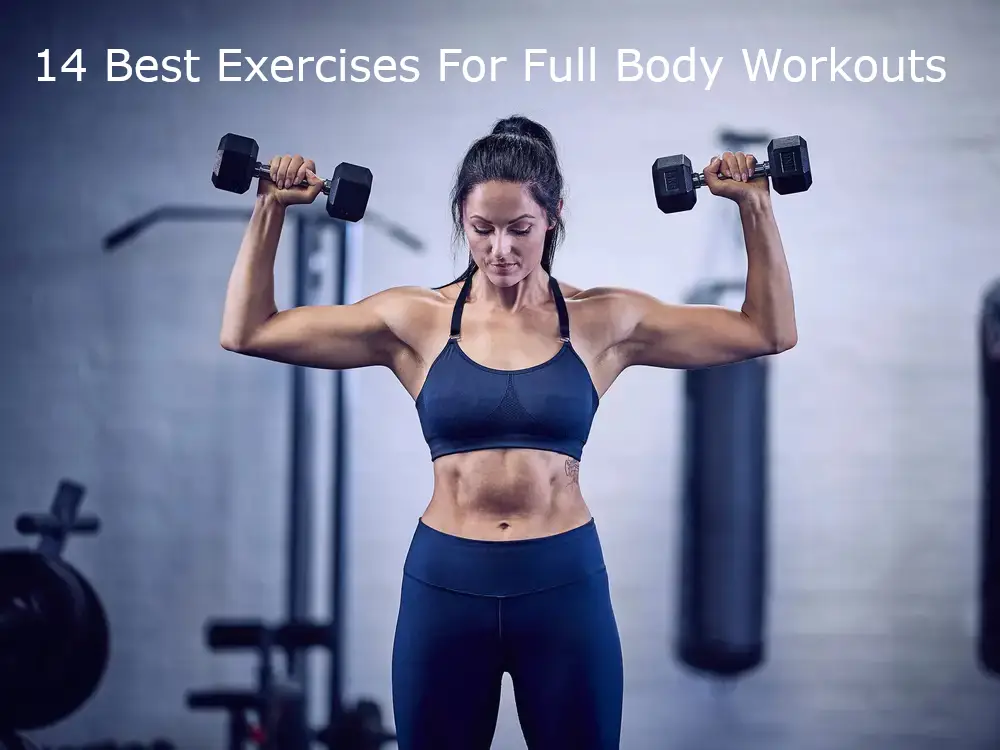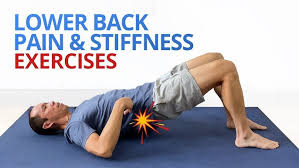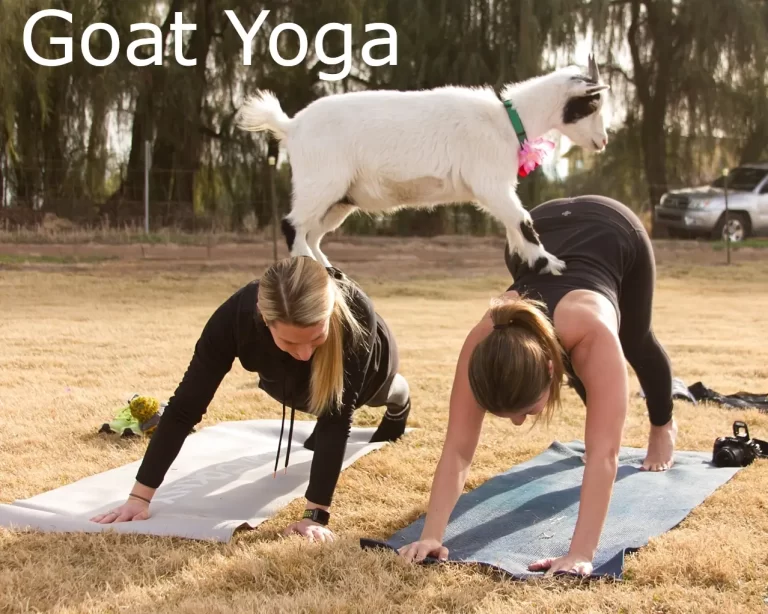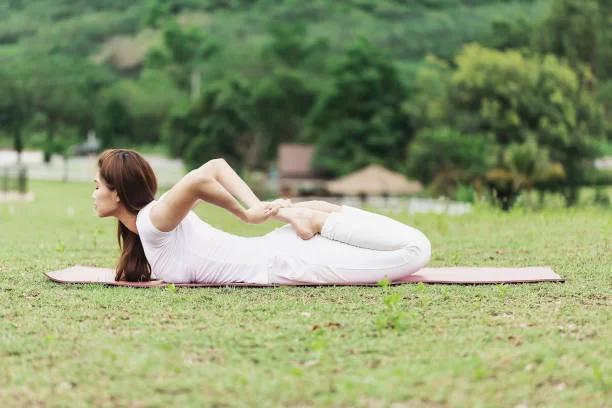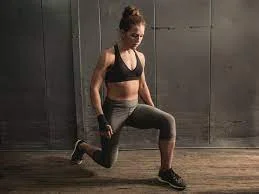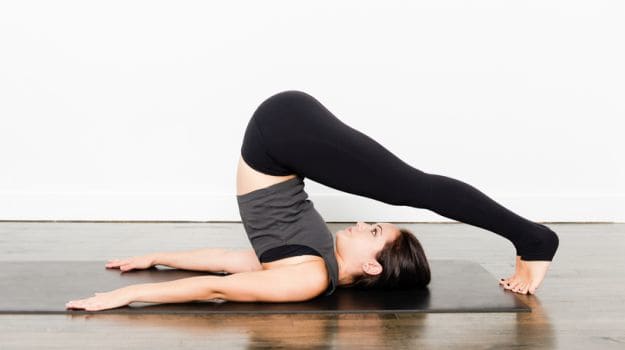14 Best Exercises For Full Body Workouts
Table of Contents
Introduction
- Read this article to discover an efficient full-body exercise program designed to promote muscle growth.
- Regardless of your level of training expertise, full-body workouts are among the finest workout combinations for building strength and muscle.
- They are time-efficient, needing only three exercises per week in this scenario, and they also allow you to maximize your training frequency and recuperation throughout the week.
- But to get the most out of a complete body exercise, you must make sure that every session sufficiently targets each of your main muscle groups:
- And you have to practice it in a balanced way so that over time, your muscles build and increase in proportion.
- Resulting in a more attractive figure as well as a decreased chance of injury.
- I’ll walk you through the process in detail in this essay using the most recent research and our understanding of human anatomy.
- Understandably, you’re busy. You don’t have enough time to work out twice a week on your biceps, triceps, back, and chest.
- We’ve got your back, super muscular. Don’t worry. Here is our go-to resource for full-body exercises.
- The best exercises are right here: one “do-anywhere” bodyweight session, two blasts with just dumbbells, and the director of education at the renowned London gym Third Space.
- All of these routines are sure to increase muscle, speed up your metabolism, and fit in with your hectic schedule.
- Let’s be clear, though, that these exercises are more than merely time-savers before we move on.
- When used properly, they also greatly increase strength.
- People who strengthen their legs or upper bodies frequently make the error of not realizing that other muscles in the body contract simultaneously.
- As a result, if one fails to control or strengthen these muscles, their strength may be depleted in other areas of the body.
- A workout that works the entire body does more than just one muscle group.
- While not every exercise can target every muscle, these routines usually target the core, lower body, and upper body.
- The Office of Disease Prevention and Health Promotion states that aerobic and muscle-strengthening should be a part of exercise.
- While many muscle-strengthening activities speed up breathing and heart rate, aerobic activity should preferably be done for 20 to 30 minutes each day.
- This is longer than the typical duration of muscle-strengthening activities.
- Nonetheless, one may make sure they are working every muscle group in their body by mixing a few workouts that target several muscle groups, such as aerobic activity and muscle-strengthening exercises.
Workout Description
- Full-body exercises have long been in style.
- They let you work out hard and just three days a week, which is why they are so successful.
- Most people can recuperate as best they can in between training sessions with this kind of planning.
- They are perfect for any level of experience.
- When performing complete body workouts, beginners will see great results.
- Intermediates will keep seeing advancement toward their objectives.
- Additionally, experienced lifters will be able to hold onto their bulk and gradually grow on their already-established base.
- Five of the most crucial exercises for your whole body fitness regimen will be covered in this article.
- After that, we’ll provide you with a fantastic full-body exercise program to assist you in reaching your objectives.
- Finally, we’ll address some of the most often-asked questions about working out the entire body.
14 Best Exercises for Full Body Workouts
Squat With an Overhead Press
- A fantastic combination exercise for simultaneously training the upper and lower bodies is the squat with an overhead press.
- Together, these exercises provide a smooth transition from a squat to an overhead press.
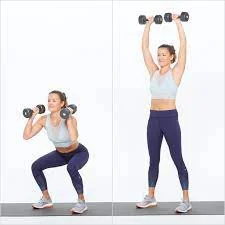
Steps To Follow:
- Set your feet a little bit wider than your hip distance apart.
- You should lay light to medium weights on your shoulders, with your elbows bent and your palms facing each other.
- Lower yourself to a squat.
- Keep your torso straight by lifting your chest (at the bottom of a squat, try flashing someone your shirt’s front logo).
- Make sure you are moving your hips back to protect your knees.
- Digging into your heels, press the weights above to get to your feet.
- Lower the weights to your shoulders and go back to one to three sets of eight to sixteen repetitions.
Squat, Curl, and Press
- A popular compound workout that targets the arms, shoulders, core, and legs all in one dynamic action is the squat, curl, and press.
- This is a more difficult workout that calls for stability and strength.
- Prior to attempting higher weights, practice this movement pattern with lesser weights first.
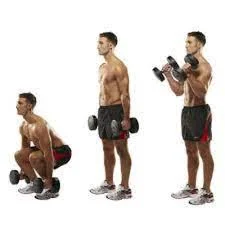
Steps To Follow:
- Hold light to medium weights by your sides with your hands facing each other while standing with your feet slightly wider than your hips.
- With your palms facing front, squat down, and touch the weights to the ground.
- Maintain a straight back and tucked-in, contracted abs.
- Lift the weights and curl them up like a biceps exercise.
- Press the weights above, extending your arms to come to a standing posture.
- Let your arms turn naturally so that the palms are facing front once more.
- After ten to sixteen repetitions of the exercise, lower the weights to your sides.
- Finish 1-3 sets.
Single-Arm Hinge and Swing
- A great whole-body workout that tones the arms, core, thighs, hips, and glutes is the single-arm hinge and swing.
- This is a wonderful warm-up workout since it will raise your heart rate if you use a larger weight.

Steps To Follow:
- Place your feet hip-distance apart and use your right hand to grasp a weight.
- Swing the weight between your knees while maintaining a straight back and contracted abs.
- Bend at the hips as well as the knees.
- Swing the weight above while maintaining a straight arm as you rise up.
- Restart with a reduced weight, doing 1-3 sets of 8–16 repetitions on each side.
Deadlift Row
- Another excellent exercise that targets several muscular areas is the deadlift row.
- You begin with a deadlift, which works your glutes, lower back, and hamstrings.
- Next, you perform a row, which works your lats.

Steps To Follow:
- Place your feet hip-distance apart, keep your arms at your sides, and grasp medium weights in both hands.
- Touch the ground with the weights while squatting.
- After that, deadlift while maintaining a flat back.
- Holding the weights at your sides, go back up on your feet.
- Now, pull the arms into a row while bending your knees slightly and tipping your hips.
- Execute 1-3 sets of 8–12 repetitions of the deadlift row.
Side Squat to Overhead Press
- This is one of those workouts that seems insignificant until you give it a try.
- Then you’ll notice how many different muscle groups, including the shoulders and lower body, this exercise engages.
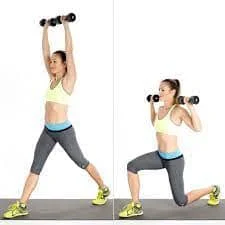
Steps To Follow:
- Holding weights in front of your chest with your hands facing each other, start with your feet together approximately hip-distance apart.
- Press the weights above and step out to the right into a squat.
- Step your feet together after lowering the weights and rotating them back to their initial position.
- For one to three sets of eight to sixteen repetitions, repeat on the opposite side.
- Consider diving into the squat rather than stepping out for an extra challenge.
Single-Arm Clean and Press
- A workout that works the entire body, including the shoulders, core, and lower body, is the single-arm clean and press.
- Your core needs to work extra hard to maintain your body’s stability and balance as you do this movement one arm at a time.
- Your body heats up and your heart rate increases with the combination of actions.
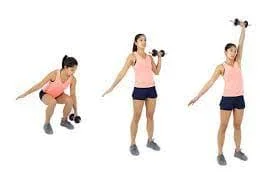
Steps To Follow:
- Holding a weight in your right hand, take a stance with your feet hip-distance apart.
- With your back straight and your abs tucked in, squat down and bring your weight down to the floor.
- Pull the weight into a single-arm row by pushing back up.
- Rotate the arm in a smooth motion while you press and raise the weight above your head.
- Restart with a reduced weight, doing 1-3 sets of 8–16 repetitions on each side.
Pushup Plank and Single-Arm Row
- A complex workout that targets the chest, shoulders, triceps, back, and core is the push-up plank and row.
- You may strengthen and increase your power by combining a close-grip pushup with a row, which will target your back and chest muscles simultaneously.
- Since this is a tough workout, begin with less weights and adjust by performing the pushups from your knees if needed.
- To create a more sturdy base, you may also spread your feet a bit wider.
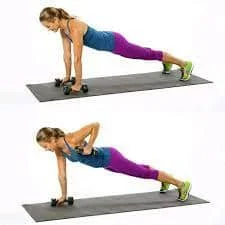
Steps To Follow:
- Position yourself on a step or elevated platform in a push-up stance.
- Hold dumbbells shoulder-width apart with your hands.
- As an alternative, you might perform this maneuver on the floor to increase the intensity.
- With your abs tucked in and your back flat, descend into a close-grip pushup.
- Take a quick grasp of a board after pressing up.
- As you bring the proper weight up into a single-arm row, keep your hips and torso up (avoid falling into a banana back!).
- For 1-3 sets of 8–16 repetitions, lower and repeat, switching rows on each side.
360 Plank With Single-Arm Row
- The single-arm rows in the 360 plank might be a little challenging since many things are happening at once.
- After moving from a standing to a plank posture, you’ll perform a few dumbbell single-arm rows.
- The legs, abs, and back are just a few of the muscular groups that this complex exercise targets.
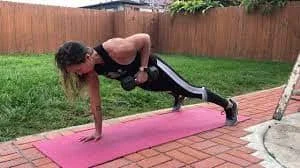
Steps To Follow:
- Grasp weights in both hands and pivot to the left while standing.
- Step forward while maintaining a straight right leg to execute a lunge with your left leg.
- Holding the weight, lower it to the floor with your right hand.
- As you pull your left arm into a row, you should be in a deeper version of the running lunge.
- Step the left leg back into a plank stance and touch the left hand to the floor while maintaining your weight.
- After raising the left arm into a single-arm row, bring the right foot forward.
- Raising your head, face the rear of the room.
- Repetition of the sequence involves lunging to the left, stepping forward with the right leg, and then elevating the left arm into a row.
- After completing a full circle of lunges, planks, and rows, you should once more be facing forward.
- After four circles, pivot by kicking with your right leg first.
- Make four circles in the other way.
Walking Knee Lunge
- The walking knee lunge is a functional exercise that uses a movement we frequently use on a daily basis getting up and down from the floor to engage the complete body.
- This action will simultaneously improve stability, flexibility, and movement.
- This technique becomes more difficult when you have to hold a weight overhead, so practice without any weight at first until you gain the feel for it.
- For this activity, you should also utilize a cushioned, soft surface, such as a yoga mat.
- You might also consider keeping a chair close by in case you need help getting on and off the floor.

Steps To Follow:
- With your right hand holding a light or medium weight, extend your arm over your head so that your biceps are framed up to your ear.
- With your right foot stepping back, do a lunge by bringing your knee to the floor.
- Now, with the weight still overhead, step back with the left foot and contact the floor with the knee.
- At this point, you ought to be on both knees.
- To stand again, take a step forward with your right foot and then your left, maintaining your weight aloft.
- After 8 repetitions, swap the weight to your left hand and repeat the exercise 8 more times, starting with your left leg.
Rear Lunge With a Double-Arm Row
- A complex action that engages the glutes, hips, and thighs in addition to the back muscles is the rear lunge with a double-arm row.
- This full-body workout works the lats by having you step back into a straight-leg lunge and draw your arms up into a double-arm row.
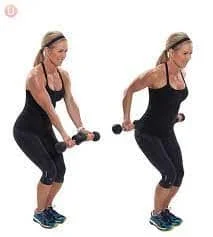
Steps To Follow:
- With the right leg extended in a reverse lunge, step back while holding weights in each hand.
- The front knee should be just behind the toes and the rear leg should be straight.
- In a double-arm row, tip from your hips and keep your back flat while you bring your elbows up to your body.
- Once you have lowered the weights, return to your starting position.
- Finish 1-3 sets of 8–16 repetitions for each side.
Side Lunge With Triceps Extension
- You may combine the side lunge with a dynamic exercise that targets your lower body and triceps.
- Important parts of this exercise are to step out wide into the side lunge and to sit back somewhat to activate the glutes while extending the arm to the side.
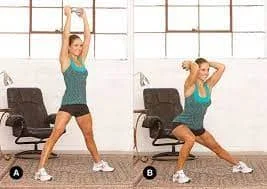
Steps To Follow:
- Starting with the feet together, hold a weight in a row position with your left hand.
- Step wide to the right to initiate a side lunge.
- With your foot pointing front, your left leg should be straight and your right leg bent.
- Press the weight out to the side, straighten your left arm, and sit on the heel of your right foot while maintaining a level back and a small forward lean.
- Before swapping sides, repeat 8–16 repetitions while bending the arm back into a row and stepping back to the beginning position.
- Finish 1-3 sets.
Side Lunge with Upright Row
- With a single dynamic action, this functional exercise is an excellent method to engage your upper and lower body.
- The secret to a successful side lunge is to pay close attention to form.
- Send your hips back and don’t overstretch or stress on your knee.
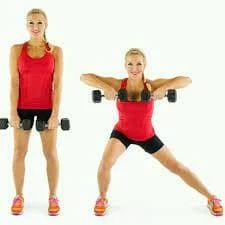
Steps To Follow:
- Position your feet together and grasp a dumbbell in each hand to begin.
- Step wide to the right, then bend your knee to make a side lunge.
- Take a minute to check that your left leg is straight, with the hips back, the back straight, and the toes pointing forward.
- Step the feet back together while applying pressure on the rear heel.
- Perform an upright row with the weights at chest level and the elbows drawn up to shoulder height.
- After lowering the weights, perform a left-side lunge, stand back up, and then perform an upright row.
- Complete 1-3 sets by repeating the series for 8–16 repetitions.
Deadlift with Overhead Press
- This complex exercise targets the quadriceps, biceps, hamstrings, glutes, hip flexors, and shoulders all in one smooth motion, making it an excellent full-body workout.
- Part of the challenge is keeping your balance, so practice each motion separately before combining them all together.
- Start without any weights.

Steps To Follow:
- Dumbbells should be held by your sides with your hands facing each other as you stand with your feet slightly wider than hip-width.
- Lower the weights to the ground while tipped forward at the hips.
- Maintain a straight back and arms.
- Proceed to do a deadlift with the weights.
- Press the weights aloft as you raise yourself all the way to standing.
- After lowering the arms, tip forward once again, and repeat the motion pattern eight to ten times.
Burpee with a Renegade Row
- The renegade row burpee targets several muscular groups and delivers a significant cardiovascular workout.
- It’s a full-body workout that incorporates planks, dumbbell rows, bent-knee deadlifts, and burpees.
- As an alternative, start off with little weights and maintain the weights on the ground rather than taking them up.
- Once you have perfected your form, try using larger weights.
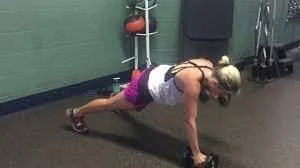
Steps To Follow:
- Holding weights in each hand, take a stance with your feet wider than hip-width apart.
- Maintain a low squat with your shoulders back, body straight, and hips down.
- Step back into a wide plank or leap back into one while the weights are on the floor between your feet.
- With your hands on the weights, maintain that posture.
- Alternatively, you might drop your knees to the floor or maintain a straight leg position.
- On each side, alternate between a dumbbell row and maintaining your hips square to the floor.
- Leap or advance with your feet.
- When you take up the weights and stand back up, don’t forget to squat extremely low, keeping your back straight and your hips back.
- For a change, you can keep the weights on the ground the entire time.
- For 1-3 sets of 8-16 repetitions, repeat.
The Benefits of Full-Body Workouts
- I know it sounds like common sense.
- Working out your entire body will ensure that you are developing a well-rounded physique and that no muscle group is given preference over another.
- But we’re not the only ones who think so a number of scientific studies have also come to the same conclusion.
- For instance, as compared to a standard bodybuilding split where each muscle is exercised once a week, full-body exercises had a greater hypertrophic impact, according to research published in the Journal of Strength and Conditioning Research.
- Put another way, complete body workouts are the best way to develop large muscles.
Safety and Precautions
- If you have any diseases, injuries, or other medical issues that limit your ability to exercise, see your doctor before beginning this program.
- Any workouts that hurt or are uncomfortable can be skipped or substituted.
- After exercise, wearing recovery shoes can help reduce tension, improve blood flow, and alleviate sore muscles.
- Dumbbells in various sizes as well as a bench or step (you may use the floor if you don’t have one) are required.
Conclusion
Compound exercises are excellent for full-body workouts since they increase the intensity to burn calories and build muscle. These short workouts are so flexible that you may use them anywhere and at any time, utilizing resistance bands or weights.
Whole-body exercises not only help you get more fit by increasing your strength and stamina, but they also work wonders for weight loss and body transformation. See your healthcare physician or get advice from a qualified personal trainer if you’re unsure if compound or isolation workouts are better for you.
FAQ
For most people, full-body workouts are the most effective.
Time is the primary reason why most individuals prefer full-body exercises versus split workouts, however, there are other factors as well. The majority of individuals don’t have enough time to go out for an hour every day in the first place, much less focus on just one muscle area.
During a full-body workout, many muscle groups are used simultaneously. This makes doing fewer exercises to get better workout outcomes possible. The muscles need two to three days to recuperate from the extreme tension they experience from these exercises, which are more intense than usual. Therefore, these shouldn’t be tried every day.
Don’t worry about dividing your workouts into upper and lower body sessions or focusing on certain muscle groups if your main goals are longevity, overall health, and fitness, according to Samuel. Remain straightforward: Try to get in three full-body exercises a week, with at least one day off in between.
Exercise regularly puts stress on your muscles and joints and prevents them from getting the rest and recovery they need. This is especially true if you stick to the same training routines that focus on the same muscle groups. Weariness can cause poor form and overcompensation, both of which increase the risk of injury.
Cons of a Whole-Body Exercise
An elevated risk of overtraining may exist. Working out your entire body may be challenging and draining. Squats, deadlifts, bench presses, pulldowns, and abdominal exercises might all be included in a standard full-body workout on the same day.
Reference:
- Huzar, T. (2019, April 5). List of the best full-body exercises. https://www.medicalnewstoday.com/articles/324895#doing-full-body-exercises
- Cpt, P. W. (2022, September 22). 14 Full-Body Exercises with Weights to Burn Fat and Build Muscle. Verywell Fit. https://www.verywellfit.com/compound-exercises-for-the-entire-body-1231029
- Davies, D., & Hicks, R. (2023, March 24). Become the Strongest, Leanest Version of Yourself with These 5 Full-Body Workouts. Men’s Health. https://www.menshealth.com/uk/building-muscle/a28433729/full-body-workouts/
- Shaw, S. (2021, April 1). Muscle & Strength Full Body Workout Routine. Muscle & Strength. https://www.muscleandstrength.com/workouts/muscle-strength-full-body-workout-routine

